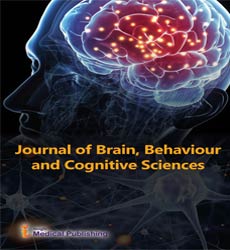Mental Cycles and Computerized Reasoning in Neuroscience
Lisbeth Nielsen*
Department of Behavioral and Social Research, Princeton University, Princeton, USA
- *Corresponding Author:
- Lisbeth Nielsen
Department of Behavioral and Social Research, Princeton University, Princeton,
USA,
E-mail: Nielsen.lisbeth@gmail.com
Received date: May 15, 204, Manuscript No. JBBCS-24-19473; Editor assigned date: May 18, 2024, PreQC No. JBBCS-24-19473 (PQ); Reviewed date: June 03, 2024, QC No. JBBCS-24-19473; Revised date: June 10, 2024, Manuscript No. JBBCS-24-19473 (R); Published date: June 17, 2024, DOI: 10.36648/jbbcs.7.1.41
Citation: Nielsen L (2024) Mental Cycles and Computerized Reasoning in Neuroscience. J Brain Behav Cogn Sci Vol.7 No.1: 41.
Description
The area of neuroscience is an interdisciplinary region committed to figuring out the cerebrum and the whole sensory system. It includes different methodologies and techniques from various disciplines, each adding to a far reaching comprehension of what the cerebrum works and means for conduct. Brain science, for instance, centers on the investigation of psyche and conduct, while nervous system science is a clinical specialty worried about diagnosing and treating neurological problems. Psychiatry, another firmly related field, dives into the mind's part in psychological wellness, meaning to forestall, analyze and treat dysfunctional behaviors. Mental science tries to coordinate neuroscience with brain research and other related fields, for example, software engineering and theory, investigating how these various areas add to how we might interpret mental cycles and computerized reasoning.
Utilitarian neuroanatomy
The investigation of the cerebrum started with physical techniques. Before the mid-twentieth hundred years, progress in neuroscience generally relied upon headways in cell staining methods and microscopy. Neuroanatomists analyzed the mind's enormous scope structure and the minute subtleties of neurons and their parts, especially neurotransmitters. Strategies, for example, cell staining were important in uncovering the complicated design of brain tissues and their compound properties. Late progressions incorporate immunostaining techniques, which permit scientists to explore neurons in view of explicit quality articulations, giving further bits of knowledge into brain capabilities and availability. Utilitarian neuroanatomy has additionally developed with the utilization of clinical imaging procedures, which empower scientists to connect varieties in mind structure with contrasts in mental capabilities and ways of behaving. Since the cerebrum needs torment receptors, these techniques consider recording from conscious, acting creatures without causing them trouble. In people, these strategies are once in a while utilized to concentrate on cerebrum action in patients with extreme epilepsy, where cathodes might be embedded to distinguish the mind districts liable for seizures. Practical imaging strategies, for example, useful attractive reverberation imaging, are additionally used to concentrate on mind movement.
Blood cerebrum
One more significant way to deal with understanding cerebrum capability includes inspecting the impacts of harm to explicit mind regions. Regardless of being safeguarded by the skull, meninges, cerebrospinal liquid and the blood-cerebrum boundary, the mind stays helpless to different sicknesses and wounds. In people, the effect of strokes and different types of cerebrum harm has been instrumental in finding out about mind capabilities. Be that as it may, deciphering this information can be trying because of the wild idea of such harm. In creature studies, especially with rodents, scientists can make designated harm utilizing terminals or confined compound infusions and afterward break down the impacts on conduct, offering more controlled experiences into mind capability. One angle includes making programmatic experiences of brain organizations to display the way of behaving of gatherings of neurons in view of frameworks of conditions that portray their electrochemical exercises. These reproductions, known as organically practical brain organizations, plan to imitate brain processes in a computational system. The other perspective includes investigating calculations for brain calculation by reproducing or numerically contemplating rearranged units that imitate a few properties of neurons however dynamic away a lot of their natural intricacy. This approach assists scientists with understanding the computational elements of the mind by investigating how brain like units process data. By and large, neuroscience is a powerful field that incorporates numerous disciplines and techniques to disentangle the intricacies of the cerebrum and sensory system. Through physical examinations, neurophysiological accounts, utilitarian imaging and computational models, specialists constantly grow how we might interpret what the cerebrum works and means for conduct, discernment and psychological wellness.
Open Access Journals
- Aquaculture & Veterinary Science
- Chemistry & Chemical Sciences
- Clinical Sciences
- Engineering
- General Science
- Genetics & Molecular Biology
- Health Care & Nursing
- Immunology & Microbiology
- Materials Science
- Mathematics & Physics
- Medical Sciences
- Neurology & Psychiatry
- Oncology & Cancer Science
- Pharmaceutical Sciences
